Sherry is part of Jerez and it feels like you can drink sherry on every corner. There are numerous bodegas that offer tours and tastings. We experienced the most exclusive sherry tasting at Bodegas Tradicion. A real insider tip for us!
Admittedly, we were very surprised when we compared the prices for guided tours in the various bodegas. For us, as sherry novices, it was an astonishing range of prices. It was clear that the price naturally depended on the amount of sherry tasted after the tour. But what other differences were there?
Bodegas Tradition is considerably more expensive than other bodegas in the city and the question arose as to what they offer that others do not. More on this later, as we only got the answer during the tour.
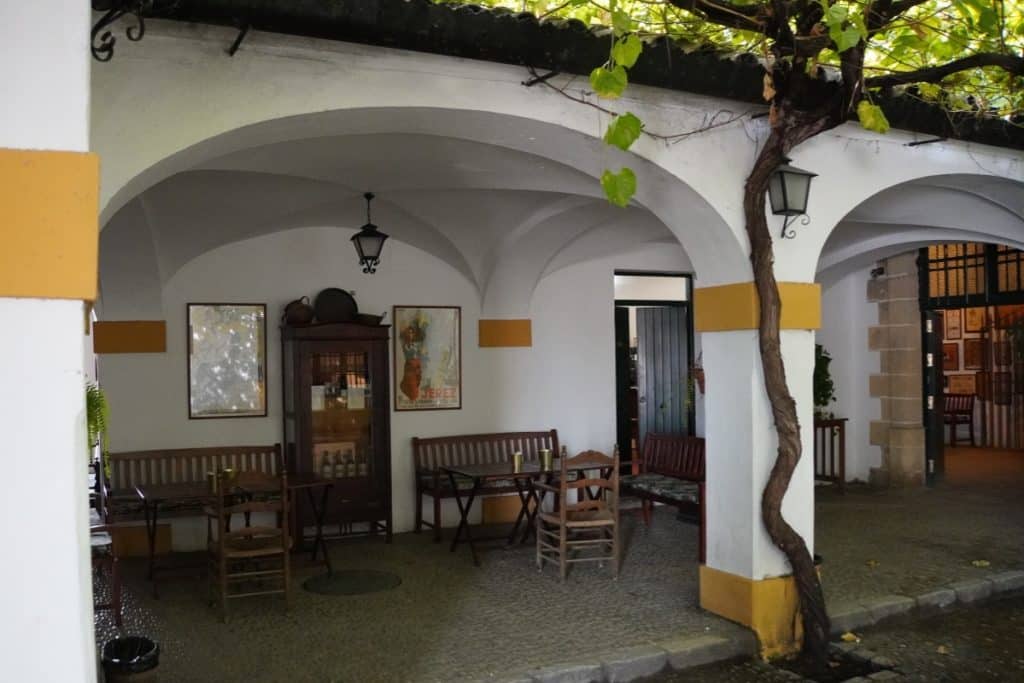
After ringing the bell at a massive gate, we were allowed into the leafy, vine-covered courtyard of Bodegas Tradicion. We were there for a guided tour in German and were surprised that we were the only participants. This was very good for us, as I was able to ask numerous questions that I would certainly not have asked in a group.
Bodegas CZ was founded in 1650 by Pedro Alonso Cabeza de Aranda y Zarco. The current owner family started producing sherry here in 1998, following the old model. They buy their raw materials from various producers in the region and refine them in around 1800 old barrels.
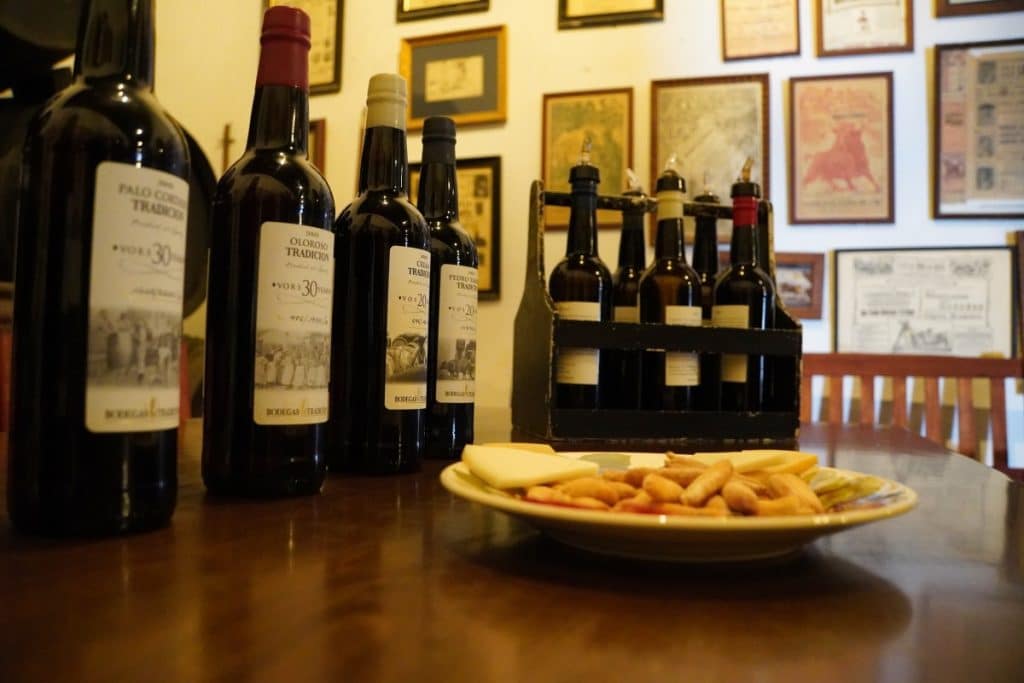
Due to the small number of barrels, production is limited and the hand-filled bottles are highly sought-after. And that already gave me a partial answer to my question as to why the tour is slightly more expensive than with other suppliers. The sherry here is exceptional and very old, which is also offered at the tasting.
What is so unique about sherry?
Sherry is only produced in the wine region of Jerez. Here, in an exposed area between Jerez de la Fronterra, Sanlúcar de Barrameda and El Puerto de Santa María, is where the vines are grown. This region has exceptional climatic conditions and the ideal soil for growing the Palomino, Pedro Ximnénez and Moscatel grape varieties. To ensure that only wine from this region is processed, there is a special control council (Consejo Regulador) that certifies the sherry according to quality and origin.
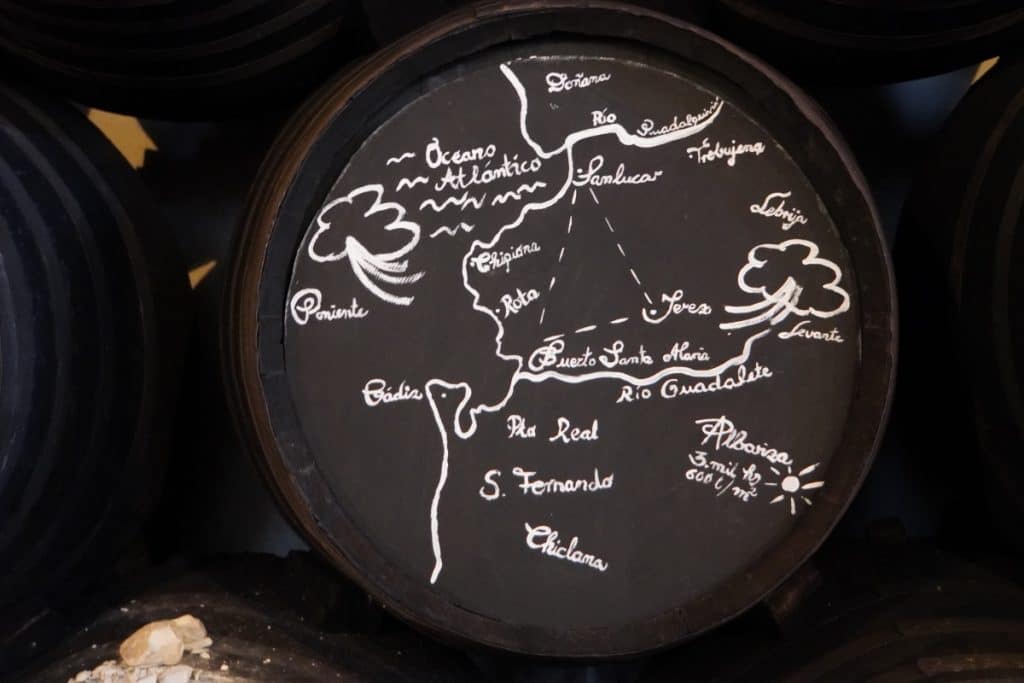
The grape varieties
The Consejo Regulador has stipulated that only 3 white wine varieties may be used for the production of sherry: Palomino, Pedro Ximénez and Moscatel.
Palomino
The Palomino grape variety is very old and has been cultivated in the Jerez region for many years. As with all grape varieties, there are numerous cultivated subspecies. The Palomino fino grape variety is particularly popular in the region. If you walk past the growing areas, you will see the first leaves on the vines in the last weeks of March and the ripe grapes at the beginning of September. The white Palomino Fino grape is the undisputed queen of the sherry region.
Pedro Ximénez
The grapes of this grape variety are very sugary and have a high acid content. The grapes are left to dry in the sun before use. This makes the sugar content even more concentrated and the resulting sherry even sweeter.
Moscatel
The Moscatel grape variety originally comes from Africa, but is now found all over the world. In the sherry region around Jerez, winegrowers dry the grapes in the sun and then use them to produce sweet sherry wines.
Sherry in the barrel
I found the creation of sherry particularly exciting. This is explained very well during the tour, so that even a layman understands the principle.
Whereas in normal wine production, the wine is stored in barrels and often matures for many years before the winemaker bottles it, things are a little different with sherry. If you walk through the wine cellars, you will see rows and rows of barrels filled with sherry. However, sherry producers use a different process to wine producers. The process is known as the criadera and solera system.
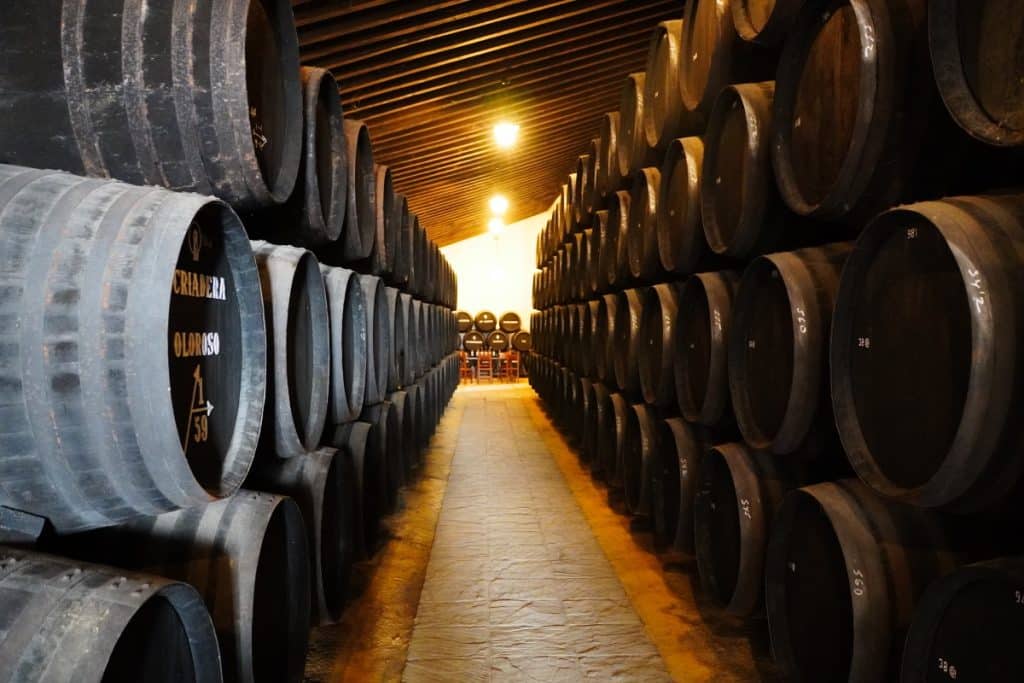
There are usually 3 rows of barrels stacked on top of each other in the bodegas. The bottom row is known as the solera. The oldest wines are stored in these barrels. Above this are the first criaderea (middle row) and the second criadera (top row). The youngest wine is stored in the top row and the “middle” aged wine in the middle row. When sherry wines are bottled, the producer pumps a maximum of 1/3 of the wine from the bottom row of barrels. He then pumps as much wine from the row of barrels above into the bottom row of barrels until the barrels are filled again. He then repeats the process and pumps the wine from the top row into the middle row until the barrels are full. Now he has free capacity in the top row for the latest wines from the last harvest.
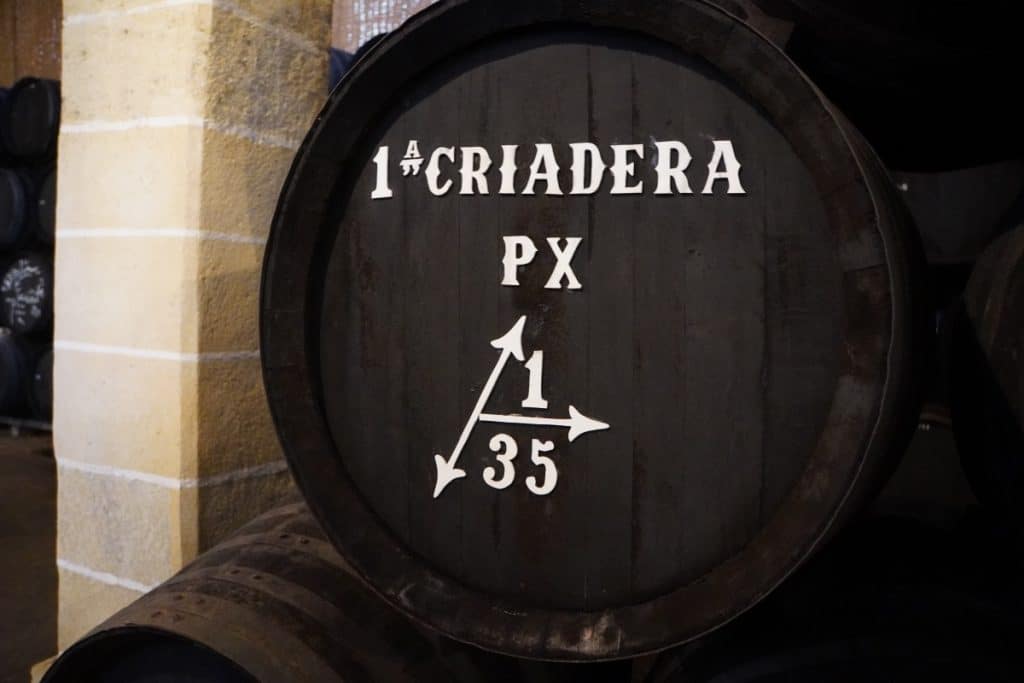
This cycle is always carried out in the same way and so sherry of consistent quality is produced, regardless of whether it was a good or bad harvest year. I find it exciting when you consider that old bodegas often have very old barrels. So it may be that the Solera range still contains “drops” of ancient sherry in the barrel.
How are the different types of sherry made?
On the one hand, the type of sherry naturally depends on the grape variety used. However, I was very surprised when I saw almost dark red sherry that came from a white grape. How could that be? Fortunately, this was explained very simply during the tour.
During the ageing process, the wine comes into contact with oxygen. This converts the sugar contained in the grape must – mainly glucose and fructose – into alcohol. The amount of oxygen determines the speed of the conversion. The winemaker tries to steer the process in a certain direction through targeted intervention. To do this, it is important to interrupt the fermentation process at exactly the right point. The wine in the cask is fortified with alcohol, thus interrupting the fermentation process. A process that sounds quite complicated to me, which I admit I didn’t immediately understand.
In order to produce sherry of a certain quality, the winemaker can, very simply put, control the production process by applying a layer of yeast to the wine. This process was also explained to us very well during our tour.
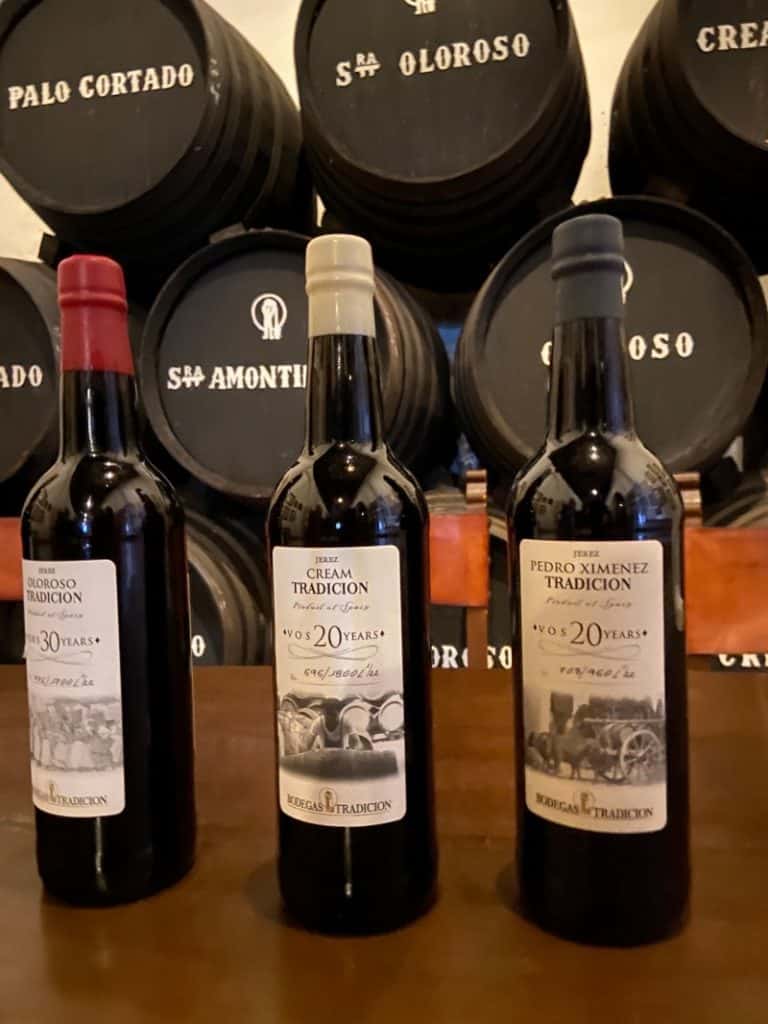
Why are there sweet and dry sherry?
After the tour of the huge hall with the sherry casks, we head off to taste some sherry wines. Here at Bodegas Tradicion, you get an exclusive tasting of very special and not exactly inexpensive sherry wines. For someone like me, who has never drunk sherry before, this is a really special experience.
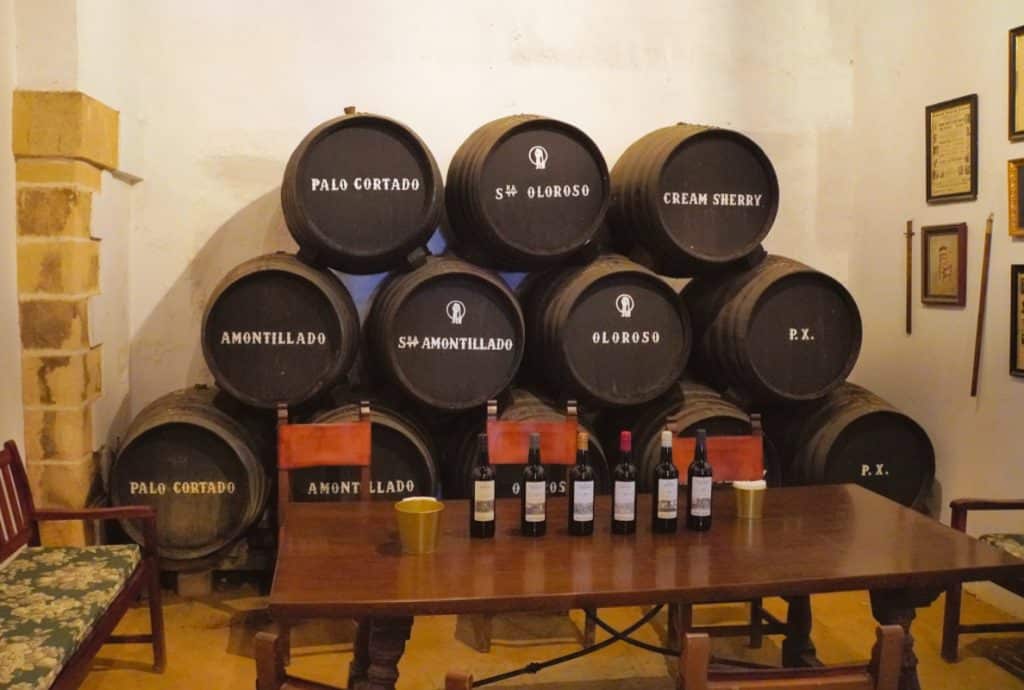
Bodegas Tradicion is the only bodega in Jerez that specialises in the processing and ageing of sherries with the highest quality and ageing certification awarded by the Control Council. Only around 0.2% of all sherry wines produced receive this certification.
After visiting the bodega, we tasted dry and sweet sherry varieties. This led me to the question: “How does sherry become sweet?”
The winemakers make Pedro Ximénez sherry from overripe grapes of the grape variety of the same name. The grapes are left to dry on special mats in the sun until they look like sultanas. The water in the grapes has then evaporated. The sugar content of sultanas is so high that one litre of must contains around 450-500g of sugar. The sweeter the sherry becomes, the darker the colour and the more aromatic it is.
Sherry tasting at Bodegas Tradicion
During the sherry tasting, the individual products are really well explained. I am really amazed at how varied the range is, even though the winemakers only use three grape varieties to make sherry. Finos, Olorosos, Moscatels etc. are different wines with a colour palette that is just as wide-ranging as the extraordinary variety of aromas, flavours and textures.
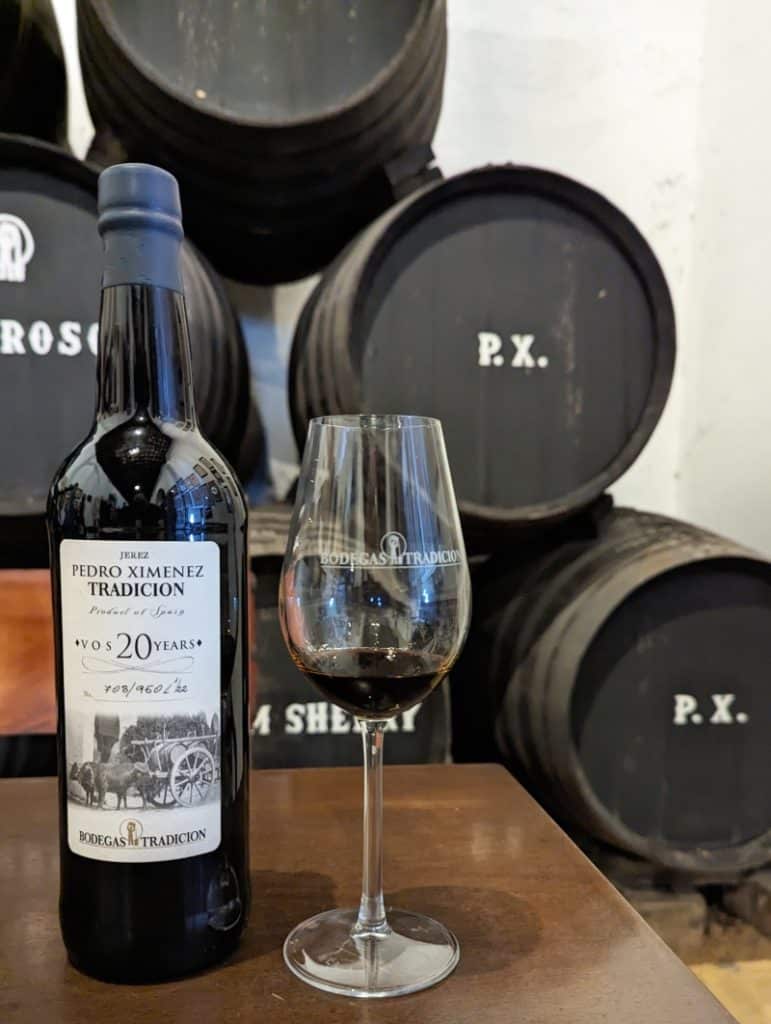
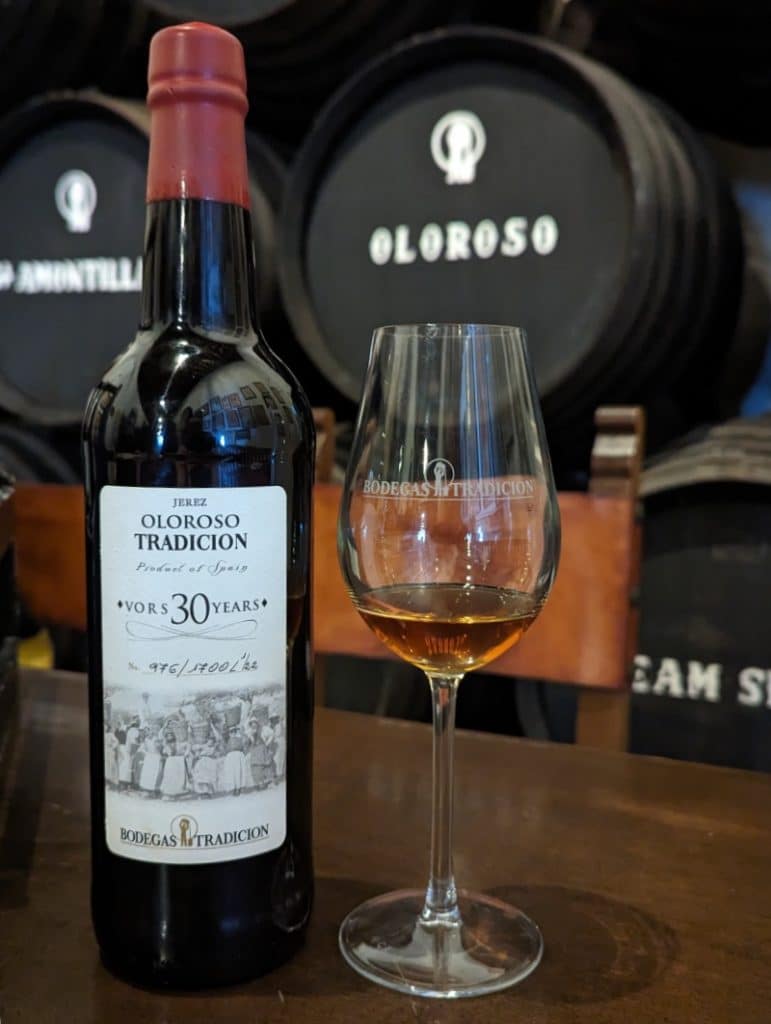
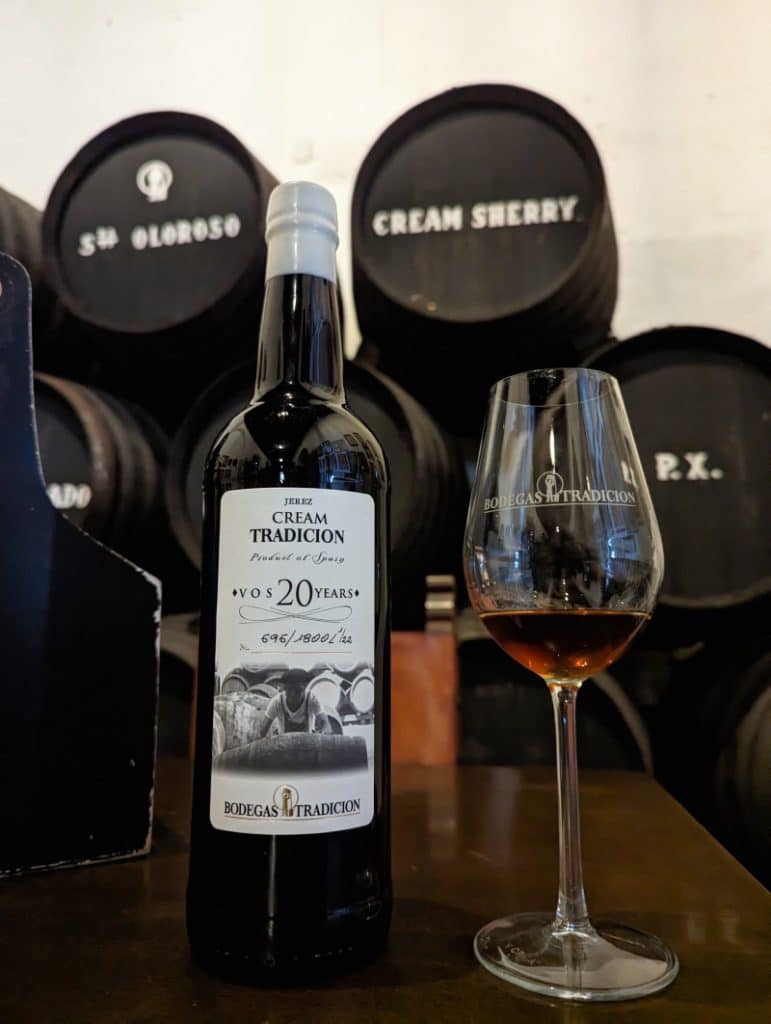
In hindsight, I thought about whether I particularly liked one sherry. And to be honest, I find it very difficult to make a decision. The Fino is good as an aperitif and is light and elegant. I found the Amontillado very interesting. It was sweet on the nose, but didn’t taste sweet at all. We tasted a fruity, nutty amber-coloured Amontillado that was at least 30 years old.
I particularly liked the Oloroso, which was even darker and a little sweeter, and I was surprised by the Pedro Ximénez with its almost red colour and light honey-date aroma. However, this sherry is quite sweet.
If you would like to know more about the bodega’s sherries and brandies, you can find a good description here.
Art and sherry
At the very end of our visit, it finally becomes clear why a visit to Bodegas Tradicion is more expensive than to other bodegas. It’s not just the outstanding sherry, it’s also the outstanding art!
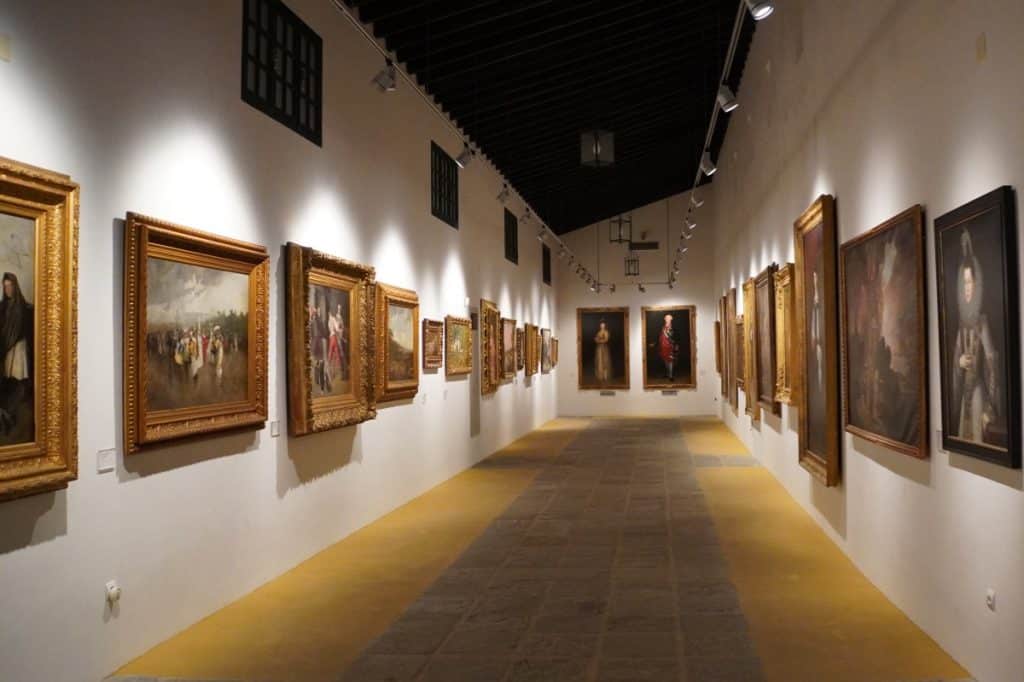
The now deceased owner of Bodegas Tradicion was not only a sherry lover, but also an art lover. He opened an official art gallery here, which visitors can visit in conjunction with a guided tour of the bodegas. There are now a total of 300 paintings from the 14th to 19th centuries in the collection, which is run by the family. Some of these are exhibited in the bodegas.
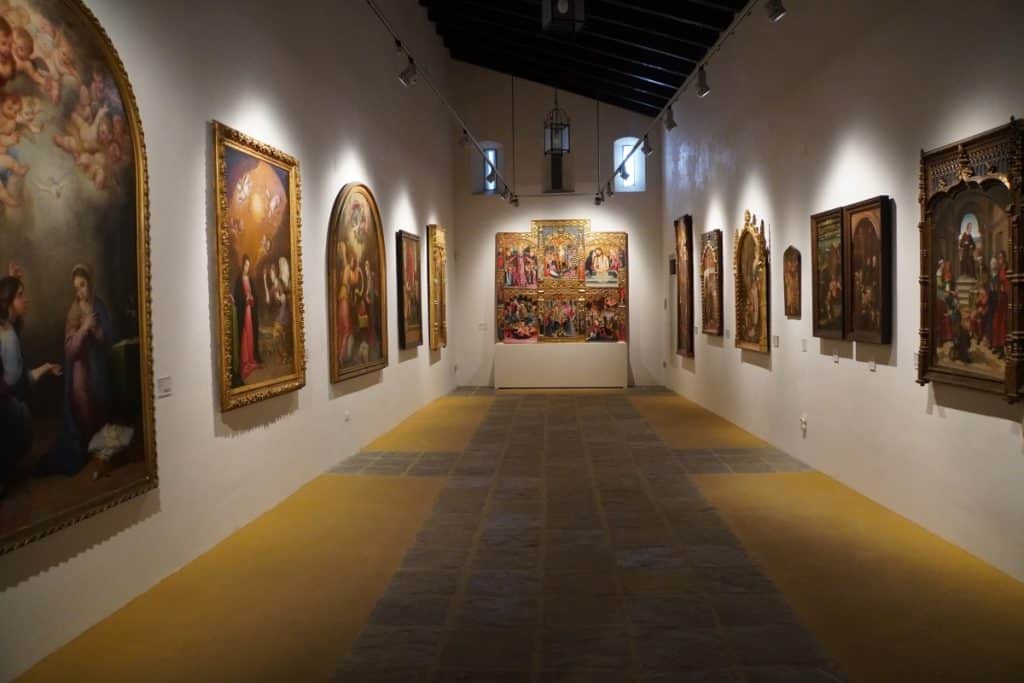
We are led into a well air-conditioned room and I am really taken aback. I really hadn’t expected this. Here, with our sherry in hand, we can stroll past some original paintings by old masters such as El Greco and Goya and admire the beautiful works of art. What a crowning finale to a visit to Bodegas Tradicion, which was really worth it!
Address:
C. Cordobeses, 3,
11408 Jerez de la Frontera, Cádiz, Spanien
The visit to Bodegas Tradicion took place at the invitation of the bodega. Thank you very much!







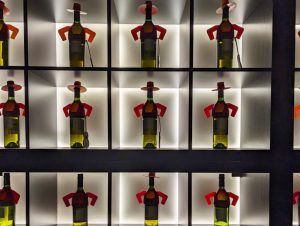



Leave a Reply